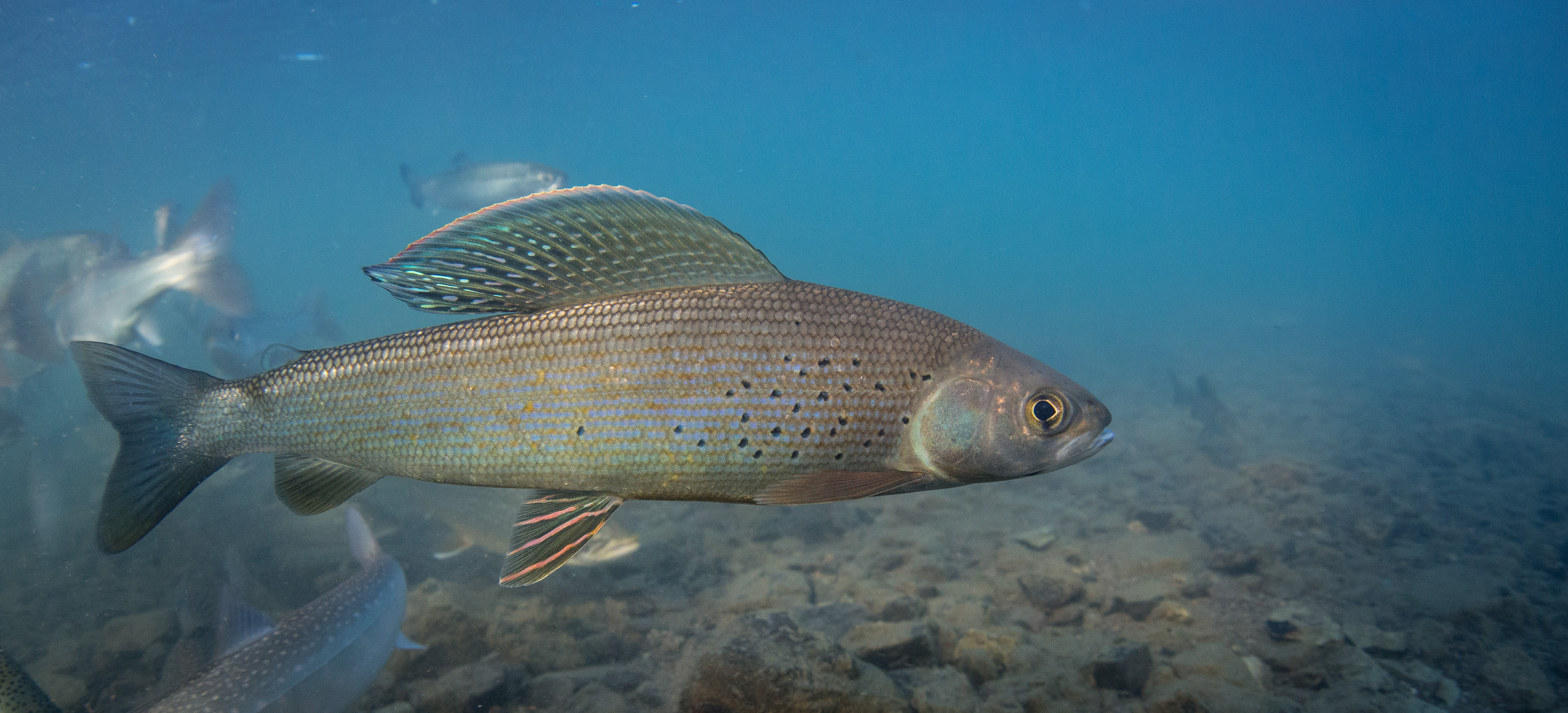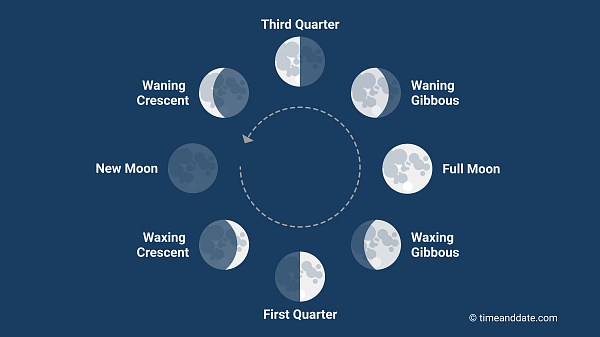Grayling are among the most beautiful and most respected freshwater fishes in the northern hemisphere, their habitat is generally similar to trout, as is their diet. However, whereas trout operate at most levels in the river system, the grayling tends to favor nymphs, caddis larvae, and shrimps before surface feeding. What are Ideal Water Conditions for Grayling?
Ideal water conditions for Grayling:
- Clear, well-oxygenated water.
- Cool temperatures, typically between 50°F to 65°F.
- Stable pH levels around 7.
- Adequate flow and current.
- Presence of structure and cover.
- Abundant insect and aquatic life.
- Minimal disturbance and pollution.
- Balanced nutrient levels.
Grayling tends to shoal (swim in numbers), so although they’re not always easy to locate, once you’ve found one, you’ve found several, at least for a while. They are generally a more popular angler’s fish in the autumn and winter.
Ideal Temperature Range for Grayling
The ideal temperature range for Grayling varies depending on the species of fish targeted and the geographical location. In general, most freshwater fish species thrive in water temperatures ranging from 55°F to 75°F (12°C to 24°C). However, specific species may have narrower temperature preferences, so it’s essential to research the preferred temperature range for the fish you’re targeting.
Influence of Temperature on Grayling Processes and Fish Behavior:
- Metabolic Rate: Temperature significantly impacts the metabolic rate of fish. Warmer water temperatures increase metabolism, leading to higher energy expenditure. Conversely, colder temperatures slow down metabolism, reducing energy requirements.
- Feeding Patterns: Fish tend to be more active and feed more frequently in water temperatures that fall within their preferred range. In warmer waters, fish metabolism increases, leading to increased feeding activity. Conversely, in colder temperatures, fish may become lethargic and feed less frequently.
- Spawning Behavior: Temperature plays a crucial role in triggering spawning behavior in many fish species. Fish often spawn when water temperatures reach certain thresholds, signaling the onset of favorable breeding conditions.
- Movement and Habitat Selection: Fish may migrate to different areas of a water body to seek out temperatures that are most suitable for their physiological needs. During periods of extreme temperature, fish may seek refuge in deeper, cooler waters or shallow, warmer areas, depending on their preferences.
- Oxygen Levels: Temperature influences the oxygen-carrying capacity of water. Warmer water holds less dissolved oxygen than colder water, which can impact fish survival, especially in highly productive ecosystems or during hot summer months.
Understanding the influence of temperature on Grayling processes and fish behavior is essential for anglers seeking to optimize their fishing experiences. By monitoring water temperatures and adjusting their strategies accordingly, anglers can increase their chances of success while promoting the well-being of the fish they encounter. Additionally, practicing responsible fishing techniques, such as avoiding fishing in extreme temperatures or handling fish with care, can help minimize stress on fish populations and contribute to the sustainability of Grayling practices.

Ideal Water pH for Grayling
pH is a measure of the acidity or alkalinity of water, indicating the concentration of hydrogen ions present. pH plays a crucial role in determining the overall health and well-being of aquatic ecosystems, including fish populations. For fish, maintaining optimal pH levels is essential for various physiological processes, including respiration, metabolism, and osmoregulation.
Fluctuations in pH can directly impact fish health and behavior, potentially causing stress, reduced growth rates, and even mortality in extreme cases.
Recommended pH Range for Successful Grayling:
The recommended pH range for successful grayling depends on the species of fish being targeted. In general, most freshwater fish species prefer slightly acidic to neutral pH levels, ranging from 6.5 to 7.5. However, it’s essential to research the specific pH preferences of the fish species inhabiting the water body where grayling activities are taking place.
Some fish species, such as trout, may have more specific pH requirements and prefer slightly lower pH levels, closer to the acidic end of the spectrum.
Conversely, other species, such as certain types of bass, may tolerate a broader range of pH levels but still thrive within the neutral to slightly acidic range.
Ideal Oxygen Rate for Grayling
- Oxygen is essential for the survival of all aquatic organisms, including fish, invertebrates, and microorganisms.
- In aquatic environments, oxygen is primarily obtained through two processes: diffusion from the atmosphere and photosynthesis by aquatic plants and algae.
- Oxygen supports vital physiological functions in fish, including respiration, metabolism, and growth.
- Adequate oxygen levels are crucial for maintaining water quality and supporting healthy ecosystems. Insufficient oxygen can lead to hypoxia (low oxygen levels) or anoxia (complete lack of oxygen), which can result in fish kills and disruptions to aquatic biodiversity.
Impact of Oxygen Levels on Grayling Outcomes:
- Fish Behavior: Oxygen levels significantly influence fish behavior, particularly their feeding and movement patterns. Fish are more active and feed more vigorously in well-oxygenated waters, leading to increased catch rates for anglers.
- Fish Health: Optimal oxygen levels are essential for maintaining fish health and vitality. Insufficient oxygen can stress fish, making them more susceptible to disease and reducing their overall growth rates. In extreme cases, low oxygen levels can lead to fish kills, negatively impacting Grayling outcomes and ecosystem health.
- Species Composition: Oxygen preferences vary among fish species, with some species being more tolerant of low oxygen conditions than others. Anglers targeting specific fish species must consider the oxygen requirements of their target species when selecting fishing locations and strategies.
- Habitat Quality: Oxygen levels serve as an indicator of habitat quality in aquatic environments. Areas with consistently high oxygen levels are likely to support healthy fish populations and provide optimal conditions for Grayling. Conversely, areas with low oxygen levels may be less productive and less suitable for recreational fishing activities.
- Management Considerations: Anglers can enhance Graling outcomes by actively managing oxygen levels in the water. Strategies such as promoting aquatic plant growth, reducing nutrient inputs, and implementing aeration systems can help maintain adequate oxygen levels and support healthy fish populations.
Oxygen is a critical factor in determining the success of Grayling activities. By understanding the importance of oxygen in aquatic environments and its impact on fish behavior and health, anglers can make informed decisions to optimize Grayling outcomes and contribute to the sustainability of aquatic ecosystems. Regular monitoring of oxygen levels, coupled with appropriate management practices, is essential for maintaining water quality and supporting thriving fish populations for future generations of anglers to enjoy.
Ideal Water Clarity for Grayling
- Water clarity refers to the degree of transparency or turbidity in a body of water, influenced by factors such as suspended particles, algae, and sedimentation.
- Water clarity plays a crucial role in grading as it directly impacts fish behavior, angler success, and overall fishing experiences.
- Understanding the effects of water clarity is essential for anglers seeking to optimize their strategies and target fish in environments where they are most likely to thrive.
How Clarity Affects Fish Behavior and Visibility:
- Feeding Behavior: Water clarity influences fish feeding behavior by affecting their ability to detect and locate prey. In clear water, fish may rely more on visual cues to hunt, making them more selective and cautious in their feeding habits. Conversely, in turbid water, fish may rely more on other senses, such as smell and vibration, to detect prey, resulting in more aggressive feeding behavior.
- Visibility: Water clarity also impacts visibility for both fish and anglers. In clear water conditions, fish are more likely to detect the presence of anglers and fishing lures, making them more wary and difficult to catch. In contrast, in turbid or stained water, visibility is reduced, providing anglers with a tactical advantage by concealing their presence and increasing the likelihood of successful catches.
- Habitat Selection: Fish species exhibit preferences for specific water clarity conditions based on their natural habitats and evolutionary adaptations. Some species, such as bass and pike, may prefer clearer water with ample cover for ambush hunting, while others, such as catfish and carp, may thrive in turbid waters with abundant food sources and shelter.
- Predator-Prey Dynamics: Water clarity influences predator-prey dynamics by altering the effectiveness of hunting strategies. In clear water, predators may rely on visual stalking and ambush tactics to capture prey, while in turbid water, they may employ alternative hunting methods, such as using lateral lines to detect movement or relying on scent trails to track prey.
- Fishing Techniques: Anglers must adapt their fishing techniques to varying water clarity conditions. In clear water, finesse techniques such as sight fishing and using natural presentations may be more effective, while in turbid water, anglers may opt for techniques that create noise or vibration to attract fish, such as crankbaits or spinnerbaits.
Water clarity is a fundamental aspect of grayling that influences fish behavior, visibility, and angler success. By understanding how water clarity affects fish responses and adapting their strategies accordingly, anglers can increase their chances of success and enjoy more rewarding fishing experiences. Whether fishing in clear or turbid waters, anglers can use their knowledge of water clarity to target fish effectively and contribute to the sustainability of recreational fishing practices.
Ideal Water Depth for Grayling Fishing
The ideal water depth for Grayling fishing can vary depending on various factors, including the specific habitat preferences of grayling, seasonal variations, and local fishing conditions. However, there are some general guidelines that anglers often consider when targeting grayling:
- Shallow Streams and Rivers:
- Grayling is often found in shallow, fast-flowing streams and rivers, particularly in areas with gravel or rocky substrate and riffles or runs. These habitats provide ample oxygenation, cover, and access to food sources such as aquatic insects and small fish.
- Runs and Pools:
- Look for grayling in runs and pools within streams and rivers, where water depth may vary from shallow riffles to deeper holes. Grayling may congregate in deeper pools during warmer months to seek refuge from high water temperatures or to conserve energy in slower-moving currents.
- Depth Variations:
- Graylings are adaptable and can be found in a range of water depths depending on seasonal and environmental factors. In spring and early summer, they may inhabit shallower riffles and run for spawning and feeding activities. In summer, they may move to deeper pools or seek out cooler, oxygen-rich habitats during periods of high water temperatures.
- Near Structure and Cover:
- Look for grayling near structures and cover such as submerged logs, boulders, undercut banks, and overhanging vegetation. These features provide shelter, protection from predators, and ambush points for feeding.
- Temperature Considerations:
- Graylings prefer cool, well-oxygenated water and may adjust their depth preferences accordingly based on water temperature. During warmer months, they may seek out deeper, cooler pools and runs, while in cooler months, they may move to shallower riffles and faster currents.
- Experimentation and Observation:
- Anglers should experiment with different water depths and habitat types to determine where graylings are most actively feeding and congregating. Observing fish behavior, water clarity, and insect activity can provide valuable insights into optimal fishing locations.
Overall, there is no one-size-fits-all answer to the ideal water depth for grayling fishing, as it can vary depending on the specific conditions of each fishing location. Anglers are encouraged to explore different habitats, depths, and fishing techniques to maximize their chances of success when targeting grayling.
Ideal Nutrients for Grayling
Ideal Moon Phase for Grayling
Ideal Weather and Barometer Pressure for Grayling Fishing
Tips for Monitoring Water Parameters
- Invest in Quality Monitoring Equipment:
- Purchase reliable water monitoring equipment specifically designed for measuring temperature, pH, oxygen levels, and other parameters. Choose instruments that are accurate, durable, and suitable for the intended application (e.g., handheld meters, continuous monitoring systems).
- Calibrate Monitoring Devices Regularly:
- Calibrate your monitoring devices according to manufacturer guidelines to ensure accurate measurements. Regular calibration helps maintain the precision and reliability of your equipment over time.
- Follow Standard Operating Procedures (SOPs):
- Develop and adhere to standard operating procedures for water parameter monitoring activities. Establish protocols for sample collection, measurement techniques, data recording, and quality control to ensure consistency and reliability.
- Select Representative Sampling Locations:
- Choose sampling locations that are representative of the water body or area of interest. Consider factors such as water depth, flow patterns, habitat characteristics, and potential sources of contamination when selecting sampling sites.
- Monitor at Different Depths and Times:
- Take measurements at multiple depths and times of day to capture variations in water parameters throughout the water column and over different time scales (e.g., diurnal, seasonal). This comprehensive approach provides a more accurate understanding of water quality dynamics.
- Use Multiparameter Probes:
- Utilize multiparameter probes that can simultaneously measure multiple water parameters (temperature, pH, dissolved oxygen) in real time. These versatile instruments streamline monitoring efforts and provide immediate feedback on water quality conditions.
By following these tips and adopting best practices for water parameter monitoring, anglers can effectively assess and manage water quality conditions to support healthy fish populations and enhance Grayling experiences.
Conclusion:
In conclusion, the ideal water depth for Grayling fishing can vary depending on factors such as habitat characteristics, seasonal variations, and fish behavior. Anglers should target a range of depths, from shallow riffles to deeper pools, while considering factors like water temperature, oxygenation, and the presence of structure and cover. By exploring different depths and observing fish behavior, anglers can increase their chances of success and enjoy rewarding grayling fishing experiences in a variety of aquatic environments.
References:
Angling Active- How to find Winter Grayling
Grayling Society-Angling for Grayling
FAQ’s
- Are there any regulations or restrictions for Grayling fishing? Regulations for grayling fishing vary depending on the location and jurisdiction. Anglers should familiarize themselves with local fishing regulations, including catch limits, size restrictions, and seasonal closures, and ensure compliance with all applicable rules.
- What should I do if I catch a Grayling? Practice proper catch-and-release techniques to minimize stress on the fish and ensure its survival after release. Handle the fish gently, avoid removing it from the water for extended periods, and use barbless hooks or pinch-down barbs to facilitate easy hook removal.
- Can Grayling be caught in both freshwater and saltwater environments? Graylings are primarily freshwater fish and are typically found in freshwater rivers, streams, and lakes. While they may occasionally venture into brackish or estuarine waters, they are not commonly targeted in saltwater environments.
- What is the best time of year to fish for Grayling? Grayling fishing can be productive year-round, but many anglers find success during the spring and summer months when water temperatures are cooler and insect activity is high.
- What are the best bait and lures for catching Grayling? Graylings are known for their voracious appetites and will often strike at a variety of offerings, including dry flies, nymphs, small streamers, and terrestrial imitations. Popular bait options include worms, insects, and small pieces of baitfish.





